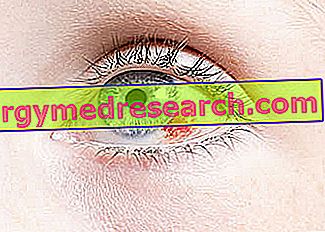CORSODYL® is a Chlorhexidine gluconate based drug
THERAPEUTIC GROUP: Antiinfectives and antiseptics for local oral treatment
IndicationsAction mechanismStudies and clinical effectiveness Usage and dosage instructionsWarnings Pregnancy and lactationInteractionsContraindicationsUndesirable effects
Indications CORSODYL ® Clorexidine
CORSODYL® is used as a disinfectant and antiseptic in the prevention of inflammatory and infectious diseases of the oral cavity and as an adjunct in the prevention of gingivitis and periodontitis.
CORSODYL® can also be used in the pre and post-dental phases, in order to limit the onset of inflammation or infections of the oral cavity.
Mechanism of action CORSODYL ® Clorexidine
CORSODYL® is a drug based on Chlorhexidine, a synthetic active ingredient, which has a marked direct anbitatic activity against both Gram positive and negative bacteria.
The topical use of this antibacterial allows the aforementioned active principle to carry out a bacteriostatic and bactericidal action through mechanisms of action that see Chlorhexidine engaged in altering the normal structure of the cell membrane, increasing its permeability and inducing cell death by osmotic lysis .
The particular chemical structure also, characterized by numerous positive charges, allows the active principle to adhere firmly to the oral mucosa, thus limiting the systemic absorption of the drug so as to inhibit any type of systemic side effect.
Studies carried out and clinical efficacy
CHLORHEXIDINE AND STREPTOCOCCO MUTANS
Am J Orthod Dentofacial Orthop. 2011 Oct; 140 (4): 537-42.
Interesting study that evaluates the effectiveness of two mouthwashes, including one based on Chlorhexidine, in controlling the formation of dental plaque associated with Streptococcus mutans. Among the two, Chlorhexidine-based was more effective in inhibiting bacterial proliferation.
CHLOREXEDIN IN THE PREVENTION OF POST-OPERATIVE INFECTIONS
J Infect Control. 2013 May; 41 (5 Suppl): S49-55. doi: 10.1016 / j.ajic.2012.10.030.
Study that tests the safety but above all the effectiveness of the use of Chlorhexidine in the prevention of post-operative infectious complications following surgery not only in dentistry.
Unfortunately, the data collected does not yet allow us to produce meaningful statistics.
ORTHODONTIC ADHESIVES AS CHOREXIDINE TANKS
Eur J Oral Sci. 2013 Jun; 121 (3 Pt 1): 211-7. doi: 10.1111 / eos.12033. Epub 2013 Mar 23.
Innovative work that demonstrates the ability of orthodontic adhesives to absorb and gradually release chlorhexidine over time, thus exerting a continuous and effective antiseptic effect.
Method of use and dosage
CORSODYL®
0.2 g of mouthwash of chlorhexidine gluconate per 100 ml of product;
1 g dental gel of Chlorhexidine gluconate per 100 g of product.
Chlorhexidine gluconate 200 mg oral mucosa spray for 100 ml of solution.
We generally recommend:
- applying the dental gel directly to the gums or teeth using your finger or a soft toothbrush;
- the use of 2 sprays on teeth and gums 2 times a day;
- 2 rinses a day with 10 ml of pure or diluted mouthwash in a little water.
It is recommended not to extend the therapy beyond 5-7 days of treatment; should symptoms persist it would be advisable to consult your doctor.
In children under the age of 12, the use of CORSODYL® should be prescribed by a doctor.
Warnings CORSODYL ® Clorexidina
The use of CORSODYL® should be preceded by a medical or dental examination to assess the overall health of the oral cavity.
The use of this drug, especially when it lasts a long time, could cause a discoloration of the teeth or the surface of the tongue or gums, without damaging them from a functional or structural point of view.
Prolonged use of CORSODYL® over time could also lead to the appearance of sensitization reactions, sometimes so severe as to require suspension of therapy.
It is recommended to avoid ingesting the drug due to the presence of excipients such as polyoxyethylene and hydrogenated castor oil, which are also responsible for local skin reactions.
PREGNANCY AND BREASTFEEDING
Given the absence of studies able to characterize the safety profile of Chlorhexidine on the health of the fetus and infant, it would be preferable to avoid the use of CORSODYL © during pregnancy and in the subsequent period of breastfeeding, resorting to its use exclusively in cases of real need and only after consulting your doctor.
Interactions
Drug interactions worthy of clinical note are currently unknown.
Contraindications CORSODYL ® Clorexidine
The use of CORSODYL® is contraindicated in patients who are hypersensitive to the active substance or to one of its excipients.
Undesirable effects - Side effects
CORSODYL®, especially after prolonged use, could lead to the appearance of local adverse reactions such as superficial tooth and tongue staining, pain, mouth irritation, flaking and rarely local hypersensitivity reactions.
Fortunately, the most clinically relevant adverse reactions are rarer.
Note
CORSODYL® is a non-prescription drug.



